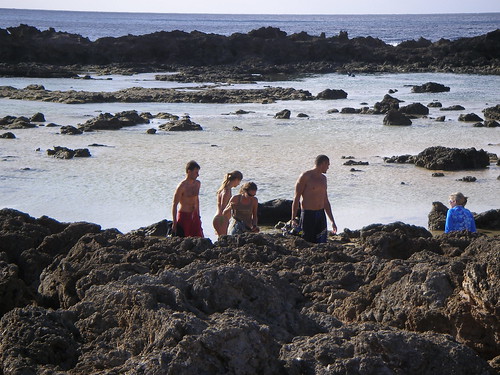The road didn't go to that cabin. We either had to hoof everything up from the bottom of the hill, or we had to drive to some point above the cabin and carry it down (the preferred way). Even water, we had to carry by bucket from the spring... well. Drinking water, anyway. There was a rain barrell of sorts to collect water from the roof for laundry and baths.
For groceries, we had a few primitive stores at the top of the hill where we could buy fresh local produce and meats, and for a fee, have our purchases delivered.
The soil around Nojiri was Black... volcanic soil, no doubt from Kurohime and Miyoko, and by the end of the day, our feet were always black. Of course, we wore rubber flip-flops everywhere, and this being Japan, never wore shoes inside, so there was a ritual feet-washing of sorts upon entering any cabin/house (to keep the floor clean) and especially at the end of the day to scrub the grime...
All houses in Japan have an entrance area with a shoebox. I still think this makes sense, even here in the US. If we'd take our shoes off when entering a house it would keep much cleaner. I have finally convinced my wife that we should have a shoebox/shoerack near the back entrance (the one from the garage to the house). She still doesn't like the visual effect of the many pairs of shoes marshaled near the entrance. It gives me, on the other hand, great comfort.
I still remember the smell of that black earth, especially after a good rain, and it was likely to rain quite a bit during any visit. I like the rain, and the feeling of being inside and watching it come down, and the damp coolness after it has just stopped, before the sun comes out to warm and dry everything again. In and around the cabin was a forest of ferns, lush undergrowth of various types of plants, beneath a nation of trees -- birches, pines, cedars, maples, bamboo, and many others, I'm sure. The undergrowth would catch the rain and water would bead-up on the leaves and drip onto the black earth. Frogs would wander forth in search of the many insects.
The mother of all flying and bighting insects was called the "buyo." I don't know the english or latin names for this insect, but we all frequently complained of buyo bights, and these bights turned red and itched like crazy. There was a certain type of plant that we knew about, which we would pick a leaf and rub the liquid from the stalk on the buyo bite, and this seemed to be the only salve that lessened the itch.
The closest spring for this cabin was at the bottom of the hill, where the path met the gravel and dirt road that went around the lake. The spring ran clear, and the water was so cold, and sweet. On a hot day, there was nothing better than a long during from one of the springs scattered about the village. I still think it was the best water in the world.


![Reblog this post [with Zemanta]](http://img.zemanta.com/reblog_e.png?x-id=b54034a8-3e07-4188-bc08-a36e8d9e8fa8)






